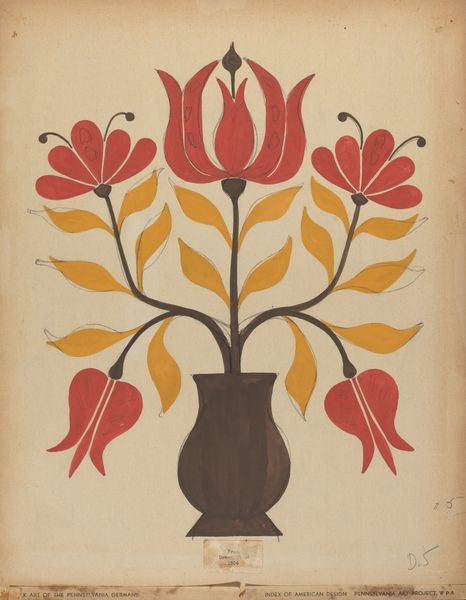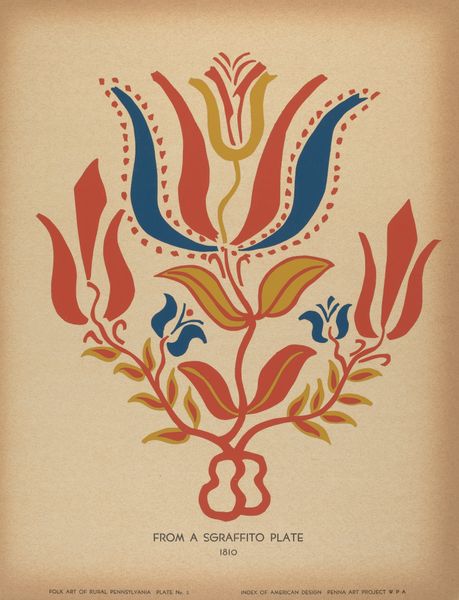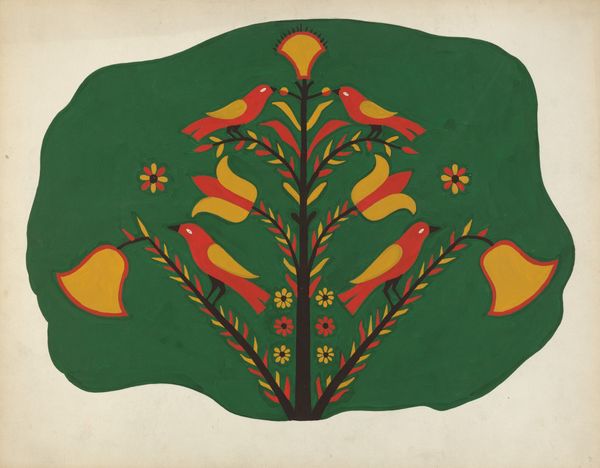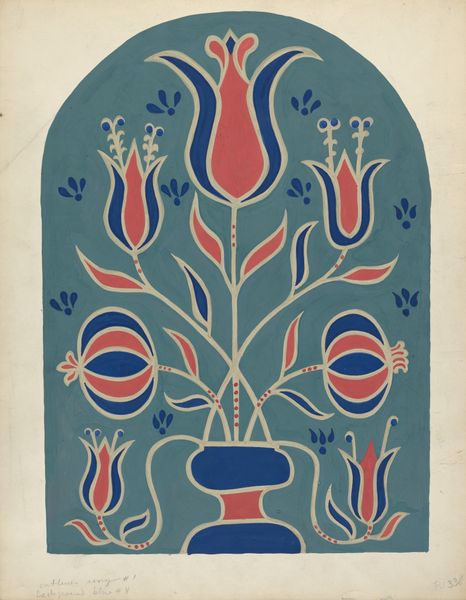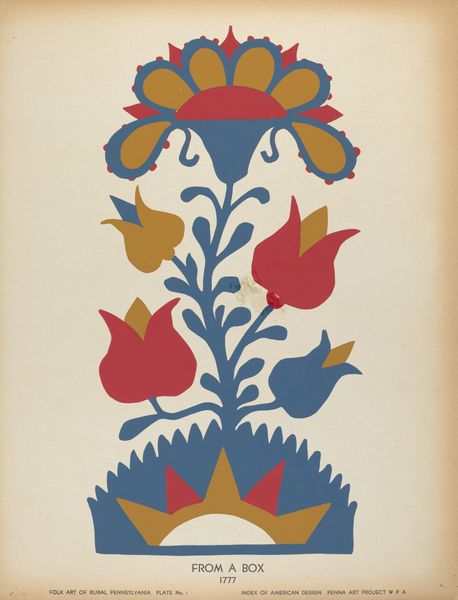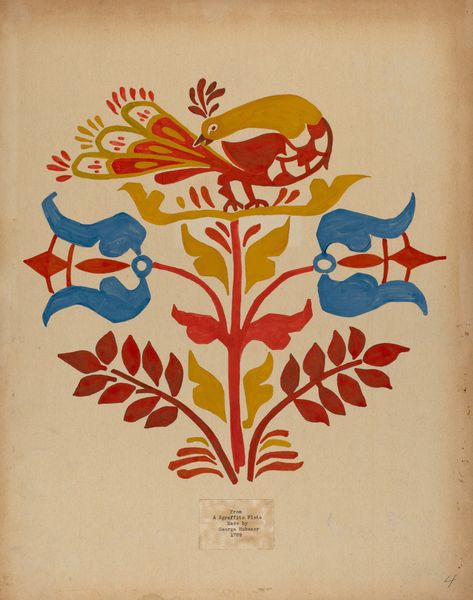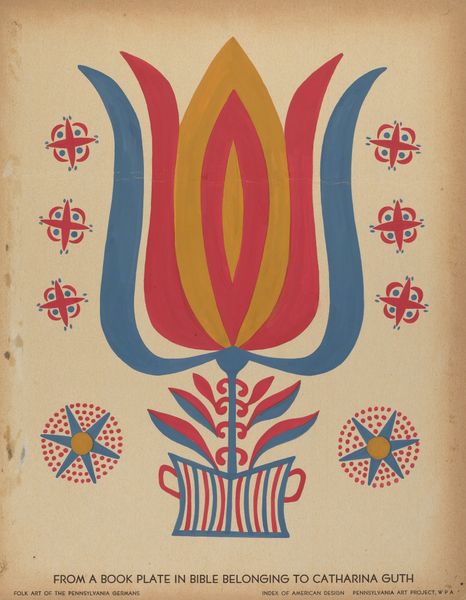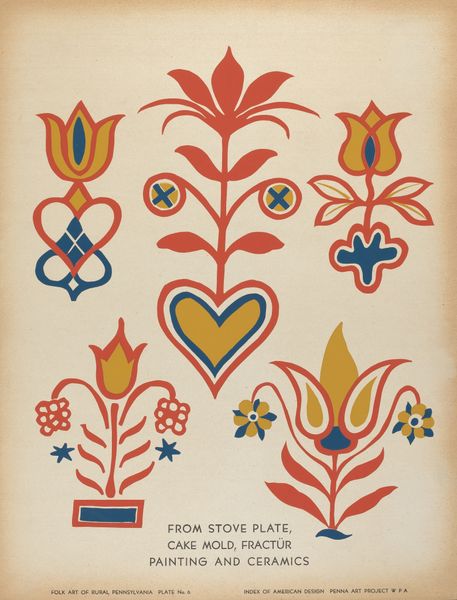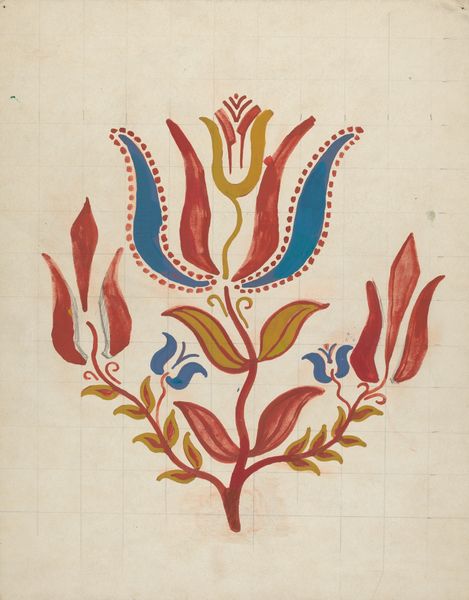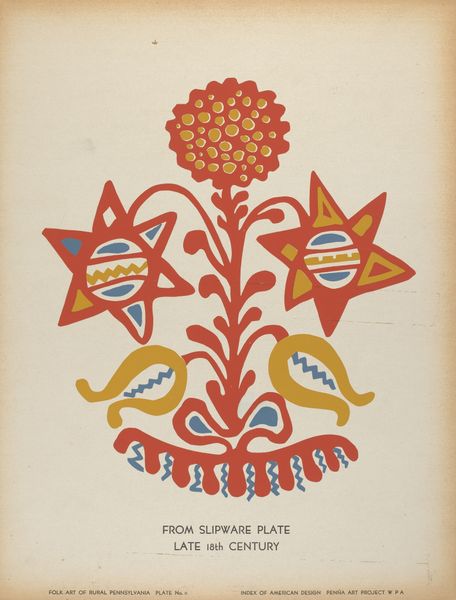
Drawing for Plate 7: From Portfolio "Folk Art of Rural Pennsylvania" c. 1939
0:00
0:00
drawing, watercolor
#
drawing
#
water colours
#
watercolor
#
folk-art
#
geometric
#
watercolour illustration
#
decorative-art
Dimensions: overall: 46 x 35.6 cm (18 1/8 x 14 in.)
Copyright: National Gallery of Art: CC0 1.0
Editor: This is "Drawing for Plate 7: From Portfolio 'Folk Art of Rural Pennsylvania'," circa 1939. It's a watercolor drawing by an anonymous artist. The geometric flowers feel both symmetrical and slightly whimsical. How do you interpret this work? Curator: I find it interesting how the artist balances decorative intent with a seemingly organic form. Consider the relationship between the red and green. The red, defining the structural outline of the tree and flowers, creates a framework, while the green fills these forms, adding depth without disrupting the overall flatness. The tension lies in how those color choices push and pull our eyes. Editor: So, it’s not just a simple rendering of folk art; it's more about the artistic choices that build up its formal structure. The way it's drawn as opposed to what is drawn. Curator: Precisely. The semiotics here are fascinating, as well. Note how the limited color palette impacts the reading of form and space. Do the dots draw your eyes in a pattern upward? How does the positioning of those red flower elements impact the reading? Editor: I see what you mean. It uses simple elements, but very purposefully. What stands out to you the most? Curator: The conscious arrangement of shapes and colours generates rhythm and unity. The composition makes one appreciate its deliberate construction more than any representational meaning. A testament to formal values. Editor: It’s interesting how much analysis can come from focusing just on the form itself. Thanks, I definitely see the piece differently now.
Comments
No comments
Be the first to comment and join the conversation on the ultimate creative platform.
